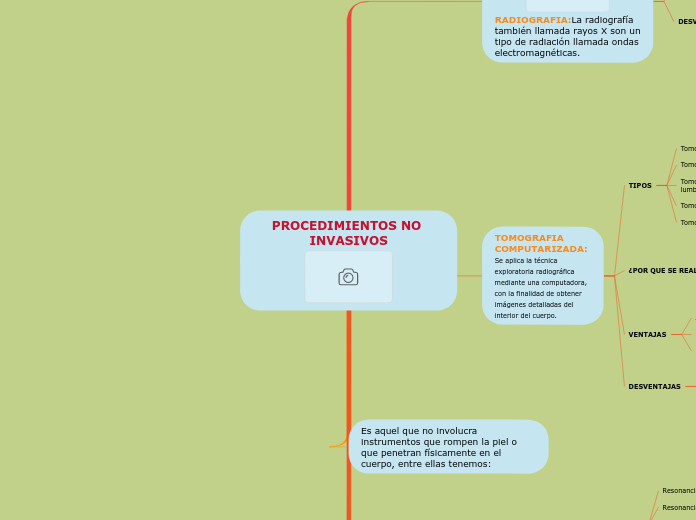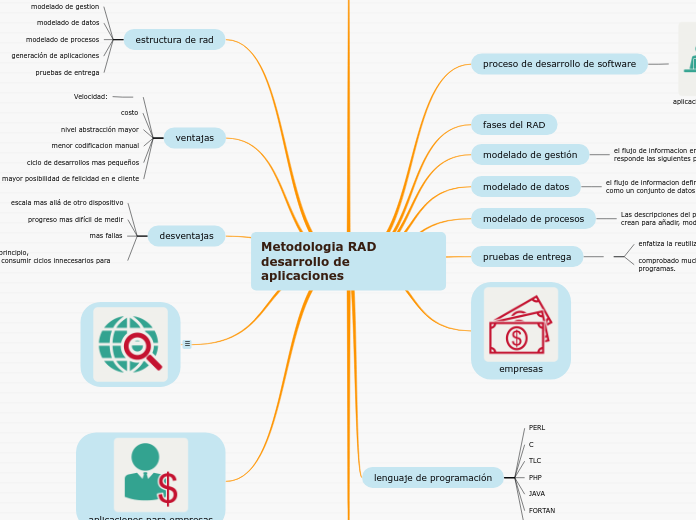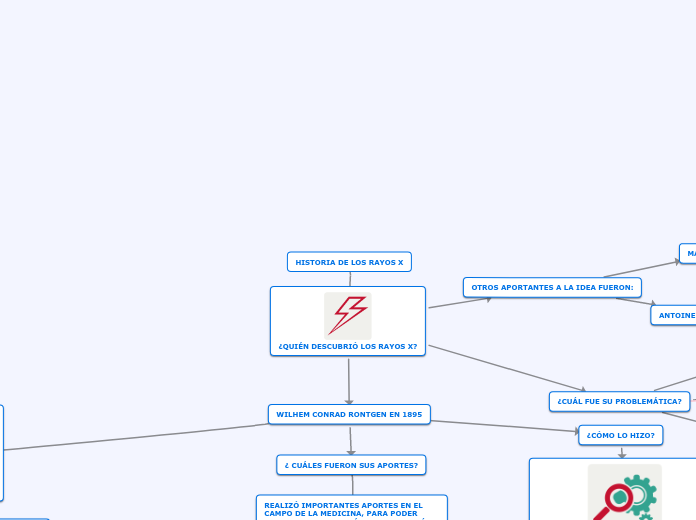PROCEDIMIENTOS NO INVASIVOS
To name your story, you have to think about the overall message and what you want your audience to understand from the story. Also, make it relevant and easy to remember.
RESONANCIA MAGNETICA:Es una técnica no invasiva que utiliza el fenómeno de la resonancia magnética nuclear para obtener información sobre la estructura y composición del cuerpo a analizar
The ending of a story is essential. We all know that if the ending is weak, what happened before loses its importance. So make it unpredictable, but fair. A resolved ending answers all the questions and ties up any loose threads from the plot.
This is the closure section of the story.
See examples of possible outcomes below:
- all problems have been solved
- it's clear how each one of your characters ends up
- your main character is transformed by the challenge
El costo de la resonancia magnética es alto económicamente.
Aún no se conocen los efectos adversos del campo magnético durante el primer trimestre del embarazo.
Existe un peligro inherente al campo magnético de alto poder.
Try answering these questions in order for you to come up with a closure:
- Have all problems been solved?
- Is it clear what happens with all your characters in the story?
- Has the challenged transformed your main character?
- How do the characters feel in the end?
Los estudios son más largos que requieren de la colaboración del paciente.
Try answering these questions to come up with a closure:
- Have all the problems been solved?
- Is there a clear picture of what happens with each character in the story?
- Has the challenge transformed your main character?
- How do the characters feel in the end?
Permite realizar imágenes de cuerpo entero.
Tiene la posibilidad de hacer estudios vasculares sin aplicar material de contraste
Provee información del metabolismo y composición de los tejidos
Se pueden obtener imágenes en diferentes planos.
Tiene una excelente resolución de contraste de los diferentes tejidos y resolución anatómica
This is the moment when the main character surpasses the last obstacle and finally faces their greatest challenge.
The climax usually follows one of these patterns:
- realization
- resolution
- choice
Type in your answer.
Resonancia magnética lumbar, etc
Resonancia magnética de la cabeza
Resonancia magnética del tórax
Resonancia magnética cervical
Resonancia magnética del abdomen
Es aquel que no involucra instrumentos que rompen la piel o que penetran físicamente en el cuerpo, entre ellas tenemos:
TOMOGRAFIA COMPUTARIZADA: Se aplica la técnica exploratoria radiográfica mediante una computadora, con la finalidad de obtener imágenes detalladas del interior del cuerpo.
The middle of the story is where you add layers of complications that will lead to the end. Reveal more about the character's journey. Did their personality go through changes? How did they overcome the challenges? And as you build up the story’s central conflict, make it more personal to that character. Also, from the middle act, you have to lead into the final act.
There wouldn't be any tension and excitement in your story if there weren't any obstacles in your character's way.
Reacciones al material de contraste
Daño al bebé por nacer
Exposición a la radiación
A story is nothing more than a character overcoming a series of difficulties to reach the desired goal. Obstacles usually create suspense and conflict. In overcoming obstacles, there is growth: weak becomes strong; hatred turns into love; sadness into happiness; wrong into right; lies into truth; or evil becomes good.
See a few examples below:
- stopping a meteor
- finding a killer
- finding love
Your character(s) need(s) motivation in order to solve the challenge(s).
Permiten distinguir los diferentes tejidos.
Secondary characters also might have motivs beacuse of which they may cross path with main character or which might trigger them to help the main character.
Proporcionar información clara y específica.
Secondary characters might also have motives that lead them to cross paths with the main character or which might trigger them to help the main character.
Adquirir imágenes rápidamente.
Why does your character need to confront this challenge? What does he/she expect to accomplish by solving it?
See a few examples:
- will marry in 3 days
- can fix the mistakes of the past
¿POR QUE SE REALIZA?
Detectar y controlar enfermedades y afecciones,
Guiar procedimientos, como cirugías, biopsias y radioterapia
Precisar la ubicación de un tumor o una infección
Diagnosticar trastornos musculares
TIPOS
Each story has a main character and that character usually needs to solve a problem or challenge. The character's challenge is the one that creates tension throughout the story.
Tomografía computarizada del tórax
Tomografía computarizada de la órbita
Tomografía computarizada de la columna lumbosacra, cervical y torácica
Tomografía computarizada del cráneo o la cabeza
Type in any other challenges which other characters in the story need to face.
Tomografía computarizada del abdomen y la pelvis
In most stories, there are 3 challenges. The number 3 is a mystical number symbolizing completeness. Try to come up with interesting challenges with which your character needs to struggle.
See a few examples below:
- turns into a werewolf at night
- is sent back in time
RADIOGRAFIA:La radiografía también llamada rayos X son un tipo de radiación llamada ondas electromagnéticas.
In the beginning of the story (or the exposition), you will need to introduce the setting and characters. You might also want to introduce the main conflict. This part of the story is important because it gives the reader necessary background information and maybe even a first insight into a character’s personality.
DESVENTAJAS
The setting (time & place) of a story can change throughout the plot.
No provee imágenes en tiempo Real.
The weather is an important element in your story because it can highly influence the ambiance and the mood of the characters.
No provee información sobre la profundidad.
The time of the story can also change. It can describe the event of a single day or can include an entire year's plot. Anyway, don't forget to mention it.
Distorsión geométrica
Your story can take place wherever your imagination will take you to.
For example: in an elevator, in an enchanted forest, etc. Don't forget to give details of the environment each time the setting changes, otherwise, the story can be confusing. Also, mention the seasons as each of them has unique weather and events.
VENTAJAS
Characters are essential to a good story. Usually, the protagonist(s) is/are the most affected by the plot. Introduce a character by focusing on their actions, interests, and occupation, as the physical appearance doesn't make a difference in most cases.
La radiografía nos permite
Type in the name of your character.
Fácil, económico y rápido
Add other qualities/attributes of the character.
Ofrece imágenes de alta resolución y alto contraste con una relativa baja exposición a la radiación.
Choose the type of your chacter:
Protagonist (main character)Antagonist (main character's opponent)Flat (stereotypical character)Round (his/ her personality develops throughout the story)Static (doesn't evolve as a person throughout the story)Dynamic (dramatical change in personality)Confidant (the main character trusts him/ her)Foil (contrasting character who enhances the personality of another character)Other










